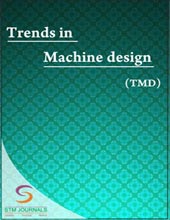Open Access

Chanchal,
- Student Department of Mechanical Engineering, Noida International University, Greater Noida Uttar Pradesh India
Abstract
Linear regression is a statistical technique for estimating the value of a dependent variable from an independent variable. Linear regression is a way to assess how two variables are related. A dependent variable is predicted using this modelling technique based on one or more independent factors. Many analyses are based on linear regression. Sometimes the data must be changed to satisfy the needs of the analysis, or extra room must be made for the X variable’s high uncertainty. Alternative robust nonparametric approaches can be utilised if the conditions for linear regression analysis are not satisfied. When the straight line in a data set passes through the origin at 0, 0, simplified equations can be applied. The most common method for predicting the value of the Y variate at any value of the X variate is linear regression. However, occasionally, an inverse prediction is required, which requires a different strategy.
Keywords: Linear regression, standard deviation. Mahalanobis, least squares, dependent variable.
References
1. Fahrmeir L, Kneib T, Lang S. 2nd edition. Berlin, Heidelberg: Springer; 2009. Regression-Modelle, Methoden und Anwendungen.
2. Bortz J. 6th edition. Heidelberg: Springer; 2004. Statistik für Human-und Sozialwissenschaftler.
3. Selvin S. Epidemiologic Analysis. Oxford University Press. 2001.
4. Bender R, Lange S. Was ist ein Konfidenzintervall? Dtsch Med Wschr. 2001; 126.
5. Sir Bradford Hill A. The environment and disease: Association or Causation? Proc R Soc Med.1965; 58: 295–300.
6. Carpenter JR, Kenward MG. Missing Data in Randomised Controlled Trials: A practical guide Birmingham, Alabama: National Institute for Health Research. http://www.pcpoh.bham.ac.uk/ publichealth/methodology/projects/RM03_JH17_MK.shtml.PublicationRM03/JH17/MK. 2008.
7. EMEA. Poiints to consider on multiplicity issues in clinical trials. www.emea.europa.eu/pdfs/human/ewp/090899en.pdf.
8. Horn M, Vollandt R. Stuttgart: Gustav Fischer Verlag; 1995. Multiple Tests und Auswahlverfahren.
9. Pedhazur, Elazar J (1982). Multiple regression in behavioral research: Explanation and prediction (2nd ed.). New York: Holt, Rinehart and Winston. ISBN 978-0-03-041760-3.
10. Mathieu Rouaud, 2013: Probability, Statistics and Estimation Chapter 2: Linear Regression, Linear Regression with Error Bars and Nonlinear Regression.
11. National Physical Laboratory (1961). “”Chapter 1: Linear Equations and Matrices: Direct Methods””. Modern Computing Methods. Notes on Applied Science. Vol. 16 (2nd ed.). Her Majesty’s Stationery Office.

Trends in Machine design
| Volume | |
| Received | September 23, 2022 |
| Accepted | September 30, 2022 |
| Published | January 30, 2023 |

